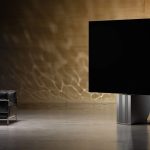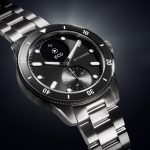Why dash cams have become essential for your car – everything you need to know
Dash cams are one of the smallest automotive devices on the market and now also one of the most useful. They’re like seatbelts, you don’t think need one until you really need one. But are they all the same? What do you need to look for?
Tech Guide sat down with Wendy Hammond from Navman, manufacturers of Mivue dash cams and Micam GPS to find out more.

Tech Guide: Give me your one-minute elevator pitch on why people need dash cams in their vehicles
Wendy: Safety and protection from other drivers. Its incontrovertible evidence of fault, location, direction and speed of impact gives an exact picture. Without it, you’re unprotected. The other driver could be louder, bigger, aggressive in their response. You don’t need to argue with them (or their insurers), you have the proof.
Tech Guide: I sense you’d like to talk for more than a minute …
Wendy: Yes please! I’d also add that people don’t think they need a dash cam until the moment they’re in an accident and it can be a costly lesson to learn. If you get the blame, you also lose your no-claims bonus (and how many of us increase that to reduce our premium – it’s often hundreds of dollars) but the cost of your next premium inevitably also goes up.
Tech Guide: Like me you have no doubt seen your fair share of dash cam videos, what’s the most shocking thing you’ve seen lately?
Wendy: To be honest it’s not Russians driving erratically any longer, it’s really the quality of the footage. When you step onto these sites, you can really tell a good dash cam from a bad one. The good ones have crisp, clear footage, stamped with GPS coordinates, speed and 3-axis G-sensor, street signs can be clearly read, along with number plates. The bad ones are shockingly bad, there is little use in having footage if the sunlight is flaring across the screen, if you can’t see the make of car, let alone the number plate. These dash cams are not worth the time it takes to install them.
Tech Guide: What makes some dash cams better than others?
Wendy: It comes down to quality of footage and this means quality of the lens – is it glass or plastic? Glass is what you want your dash cam to have – ours do. Plastic lenses are cheaper and tend to warp and distort the footage. Then there are the sensors, many of our models come with a STARVIS low light sensor or our Mivue Sensor XL has a huge two-thirds of an inch sensor which captures more light and incredibly clear images especially in low light, dark situations like nighttime or driving in carparks. And then there is how the device has been manufactured and tested. Ours are tested incredibly rigorously, taken to temperatures above 70 degrees Celsius and way below freezing, they are shaken and dropped, to make sure they robust enough. Others aren’t. Many brands don’t have their factories or the same high standards we do.
Tech Guide: How easy is it to download footage?
Wendy: We’ve tried to make it as simple as possible. Today’s entry level models use the desktop Mivue Manager – you plug in your micro-SD card and download from there. And you can use this on Mac or PC. Our other models use what we call EZYShare via wi-fi, which is an app you download to your phone and connect with your dash cam to download and share footage instantly, even from the accident site.
Tech Guide: How important is the quality of the microSD card you choose for the dash cam?
Wendy: We don’t get a lot of complaints, especially considering the number of models we’ve sold around Australia and NZ, but the one of the most frequently heard is that their dash cam isn’t recording properly. And ninety-nine times out of 100 it is not the dash cam but the micro-SD card. It’s really important to use the right type of card – one that is robust enough for constant recording and re-recording dash cams need. There’s lots of information on this on our website. Once you have the card, make sure you format it regularly and check that it is indeed working.
Tech Guide: Many of your dash cams come with a lot of safety alerts, are these really essential?
Wendy: Only if you want to avoid getting speeding tickets or going through red lights, school zones and so on. They can be updated monthly via wi-fi on most of our models, and I personally find them very useful, an audible warning to let you know if you’re approaching a camera or pedestrian crossing. They’re particularly useful for people who aren’t driving the latest model cars, some of which come with this sort of tech, albeit not as frequently updated.
Tech Guide: You sell dash cams with just one (front) camera or two (front and rear). Which do you recommend?
Wendy: The fact is most accidents are nose-to-tail so it makes sense to have both, but it can come down to what wiring drivers want in their car as the rear camera is linked and wired from the front camera, and also budget as single cameras are generally less expensive, but our dual cameras start at less than $300.
Tech Guide: Does your Mivue dash cam need to have a screen?
Wendy: It doesn’t, and some of our more discreet models don’t, but for many drivers it is comforting to able to see on the screen that the camera is recording, and it also acts as a true and accurate driving speedo, also showing when a safety camera is coming up.
Tech Guide: You’ve been making dash cams for some years now, what’s the background to the Navman story on this?
Wendy: Quite a few years we were bought by Mitac, a large global technology conglomerate with a large division including R&D working in automotive tech, which incorporates AI and IoT. It’s a huge advantage for us, we’ve been able to design, develop and manufacture products for our local markets.
Tech Guide: What does this level of R&D mean for the market? What kind of innovation will we see in the future?
Wendy: In addition to dash cams for Australian and NZ drivers, we have a large and growing operation under the Mitac Australia business offering connected dash cam telematic solutions to commercial and industrial customers like fleet operators, resources companies and trucking industry. Connected dash cams enable the recording from front, rear and inside a driver’s cabin to be instantly transmitted back to an organisation’s central hub where it can be monitored, analysed and used for driver safety. It goes way beyond what any regular driver would need but I feel sure some of the R&D will feature in future dash cams.
Visit www.navman.com.au and if buying for Christmas, order by 9 December 2022 for guaranteed delivery.









